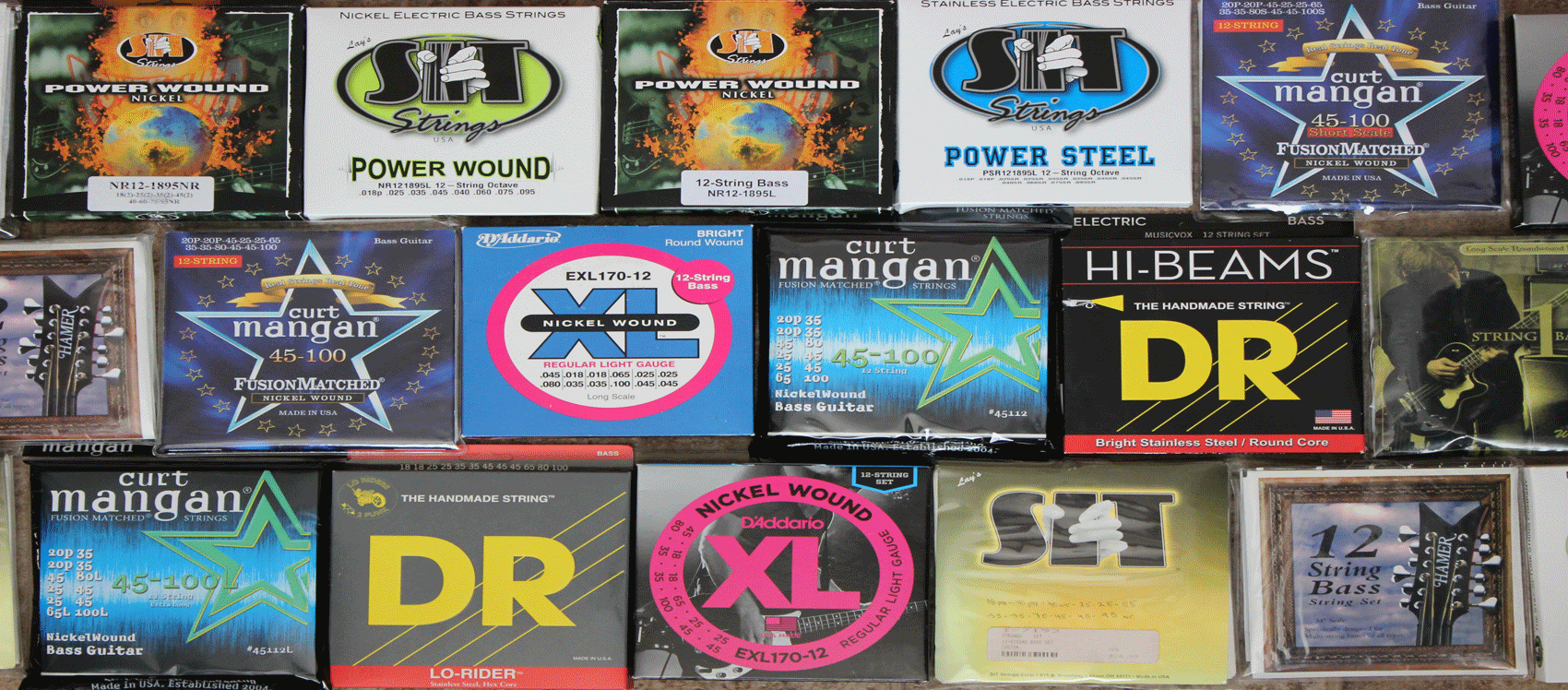Octave Strings With Small Ball Ends
a 12-String Bass String Problem
An anonymous rant
I recently changed the strings on my Hamer 12, no big deal, it happens all the time. Except this time it became a big (and potentially dangerous) deal.
The Hamer 12-string bass tailpiece has 8 holes - each pair of octave strings is strung through the larger hole.
As I was removing the strings from their package I was horrified to discover that the octave strings had small, guitar-sized ball ends! Immediately my focus diverted to the tailpiece on my Hamer and the size of the holes dedicated to the octave strings.
For those of you who may not have noticed, the holes in the Hamer tailpiece are not all the same size. The holes for the octave strings are LARGER than those for the fundamentals! I'm sure that this is done on purpose so that the strings would not be pinched together as they come from the larger ball-ends of most string brands through the hole in the tailpiece. With typical string sets this works very well, but not so with string sets that incorporate smaller ball-ends for the octave strings. Read on...
I decided to see if I could make this mismatch of small ball-ends and big hole work. The width of two small ball-ends side by side is a little greater than the diameter of the hole they go up against. I ended up having to install and tune both octave strings at the same time to keep even pressure on the ball-ends. If one string was tuned first it would slip past the other ball end and through the hole. By creating fairly even pressure on both strings I could get both strings to tune up. So the bass could feasibly be strung with these strings but I was not out of the woods yet.
It soon occurred to me that if one of the octave strings were to break I had better duck and cover quick because that other octave string was then going to be freed and would immediately be launched at me at roughly 900 mph. Not only would I have a broken octave string but I might die as a result!
Okay, I probably wouldn't die. It's still a very real problem.
Have no fear kiddies, I've solved the problem for you. I acquired a short piece of stainless steel welding wire and put a small 90° bend in one end to act as a handle. I loosened all of the strings (evenly so I wouldn't be killed) and rotated the ball ends so that I could slide this wire through all of them. Now if a string does happen to break the other octave string will stay in place. It's a simple fix and it could save your life!
Another method for anchoring strings with small ball ends which uses a piece of bass string.
Kevin Macza's method for anchoring strings utilizes the ball ends from standard bass strings. The octave strings both are routed through the center of the standard ball end.
Notice the size difference of the standard brass ball end from a USA-made string versus the imported strings with the silver ball ends. The ball ends of the imported fundamental strings are about 25% smaller than their USA-made counterparts.
